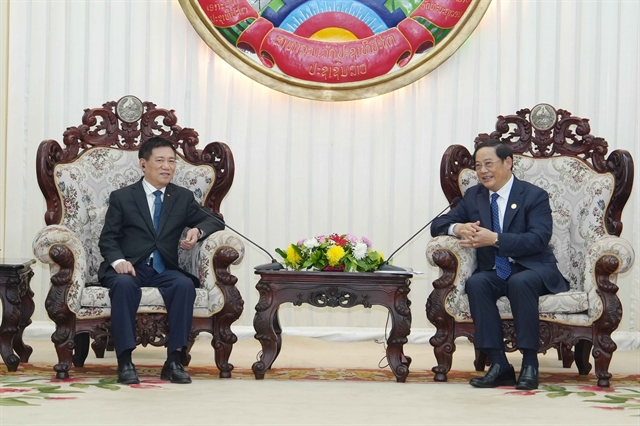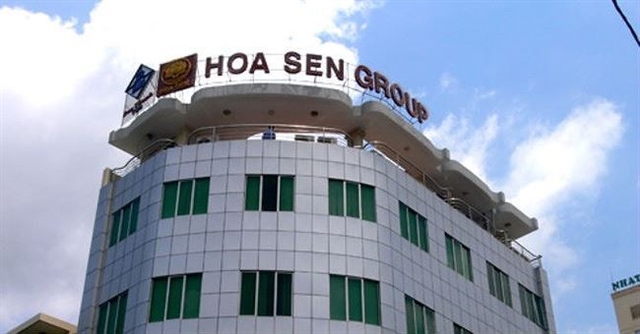 Politics & Law
Politics & Law

.jpg)
|
| Party General Secretary Tô Lâm meets with provincial authorities of Lâm Đồng, Bình Thuận and Đắk Nông provinces on Monday. VNA/VNS Photo Thống Nhất |
LÂM ĐỒNG – The merging of the three south-central and Central Highlands provinces of Lâm Đồng, Bình Thuận and Đắk Nông creates a unique opportunity to restructure the regional development model and redistribute population, infrastructure and investment in line with a forward-looking strategy for rapid and sustainable growth in the new era, Party General Secretary Tô Lâm has said.
At a working session with the Standing Board of the Lâm Đồng Provincial Party Committee and permanent members of the Party Committees of Bình Thuận and Đắk Nông provinces on Monday, the Party chief confirmed the strategic significance of merging the three provinces to form a new, larger Lâm Đồng Province. The move is aimed at enhancing governance efficiency, restructuring the development space for greater cohesion and sustainability, and optimising resources, he said.
The new province, with the largest land area in the country, will possess a larger administrative and economic capacity, significantly expanded public investment potential and the institutional strength to propose special mechanisms, attract strategic resources, and lead regional development, Lâm stated.
Merging Lâm Đồng, a hub for high-tech agriculture, Đắk Nông with its mineral wealth and industrial land reserves, and Bình Thuận, a coastal gateway boasting renewable energy and logistics capabilities, will foster an interconnected and sustainable development landscape.
The move will unite highland, midland and coastal ecosystems and enable the creation of interlinked urban, industrial and tourism zones.
All three provinces are historically resilient and culturally rich, with strong innovation capacities. Economically and socially, the provinces have made notable progress. Bình Thuận saw 7.25 per cent GRDP growth in 2024, Lâm Đồng enjoyed average growth of 7.01 per cent from 2021–2025, and Đắk Nông has witnessed improved growth, revenue and investment in recent years. Advances in human development, cultural preservation and living standards have reinforced political stability and social order.
To ensure successful restructuring, the General Secretary urged the immediate consolidation of organisational structures with an emphasis on streamlining, accountability and uninterrupted administrative functioning. Merging the provinces must be conducted transparently, with merit-based personnel appointments and without allowing parochialism, factionalism or group interests to undermine internal unity and integrity, the Party chief said.
He stressed the importance of appropriate policies for affected officials, including retirement and reassignment arrangements, all handled with responsibility, empathy and according to regulations. Those taking on new important roles must be supported with adequate housing, education for their children, and essential living conditions to enable long-term dedication, he added.
The leader said that the newly established Lâm Đồng Province must urgently rebuild its socio-economic development master plan. This blueprint should outline an open spatial structure that seamlessly links the highlands, midlands and coastal zones into a unified and integrated growth area with broad potential.
It must integrate urban centres, industry, agriculture, services, transport, digital infrastructure and ecological corridors into a unified, smart system, with a key East–West growth axis linking the Central Highlands to the coast.
Lâm also highlighted the region’s strengths – a diverse economy, rich resources, leading agriculture and unique tourism – as foundations for building a green, circular, digital and knowledge-based economy. He stressed that growth must be sustainable and ensure environmental protection, particularly of forests, river basins and coastal areas.
A visionary strategy is needed to guide local and regional transformation, driven by coordinated breakthroughs in policy, infrastructure, business, and human capital. People must be placed at the centre of this effort, with investments poured into education, healthcare and workforce development, especially in the high-tech and green sectors. Cultural preservation, creativity and inclusive learning, especially among ethnic minorities, are also key priorities, he said.
The General Secretary emphasised that national defence, security and deep societal consensus are the bedrock of the successful merger, urging the local authorities to prevent any administrative gaps or social hotspots during the transition. Law enforcement bodies should remain vigilant, proactively addressing misinformation or attempts to distort the Party’s unification policy, he said.
The Party chief also outlined tasks for the three provinces to prepare for Party congresses at all levels in the context of transition, with a special emphasis on personnel work. VNA/VNS




